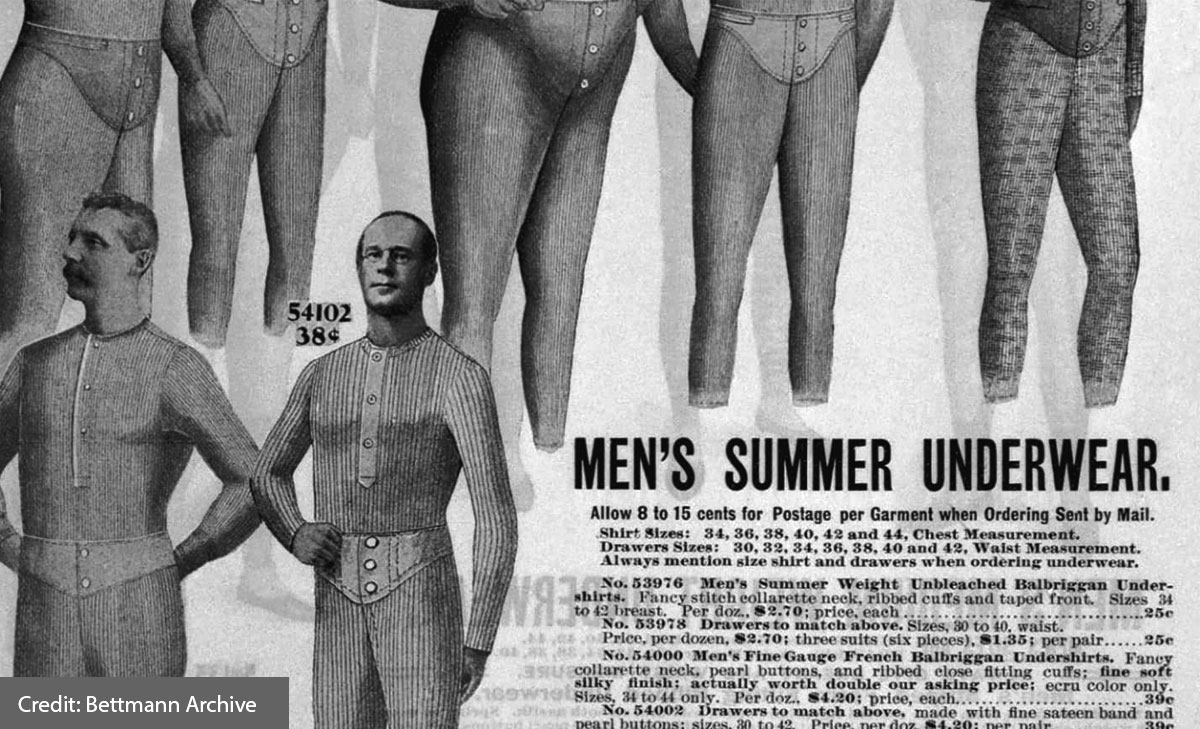The ancient Egyptians were the first to introduce a layer of clothing between the skin and an outer, more decorative garment. However, this was worn more as a status symbol than for practical or alluring reasons. In fact, until the 19thcentury, underwear in Europe and North America was largely unisex and classless, consisting of a simple linen shift worn beneath clothing. Its purpose was to protect the more expensive outer garments from dirt and sweat on the body (as bathing was not regularly practiced) and to provide an extra layer of insulation. However, as fashion became more gendered in 19th century Europe and North America, underwear did, too. Men’s underwear remained practical, but women’s undergarments took on a new role as an exoskeleton, shaping women’s bodies into fashionable silhouettes and highlighting certain zones considered to be sexual. Underwear also became more taboo; if undergarments had to be mentioned, people would refer to them as “unmentionables.” Over time, attitudes relaxed somewhat, and modern iterations of underwear developed. Mary Phelps Jacob (working under the name Caresse Crosby) introduced one of the first modern bras in 1913. In the 1930s, the men’s union suit was replaced by the Jockey Y-front and boxer shorts, which were originally issued to infantrymen for summer wear during World War I. Today, underwear has gone from unmentionable to a fashion statement in and of itself and it is frequently the subject of massive ad campaigns for brands like Calvin Klein.

Your go-to guide for weird history facts
Subscribe to the FREE daily email that makes learning about history fun.


